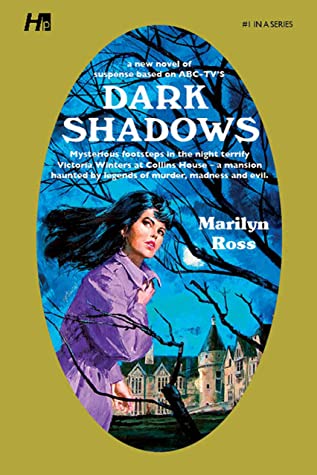
Today we might laugh at Dark Shadows, a Gothic soap opera which ran for 1,225 episodes from 1966 to 1971. We might cry because the Tim Burton-directed film was so horrendous. But whatever we do, we can’t deny how influential Dark Shadows was in re-popularizing Gothic fiction. It’s true the show was largely cashing in on an already-developing craze during the 1960s, but it also gave the movement enough staying power for publishers to churn out thousands upon thousands of Gothic paperbacks over two decades.
Of course, Dark Shadows had its own tie-in paperback series. These books were authored by genre heavyweight Marilyn Ross, AKA William Ross (1912-1995). Sometimes they follow the corresponding TV plots, but mostly they do their own thing. Always they are campy, over-the-top, self-aware, and a jolly good time—even at their worst. We’re slowly reading through all thirty-two books and providing unfiltered reactions. This review focuses on the first ten.
Book 1: Dark Shadows (1966)
I’m in love with everything. The macabre mansion, the groovy ’60s backdrop, the swirling mystery on every page, the brooding enigmatic characters. I went in knowing nothing except the Tim Burton movie, but I’d erased that travesty from my mind long ago, so basically a blank slate. Everything is still a surprise.
The story (basically Jane Eyre) moves methodically, adding layer upon layer of suspense and mystery. The build-up to Victoria Winters’ arrival at Collins House was so thick with tension, Ross had me panting with desire for what happens next.
It’s a short read—150 pages, or 5 hours on audio—but doesn’t feel that way. Gothic novels of the ’60s and ’70s were designed to be lean so readers could devour them quickly and buy more. It’s a shame that trend has faded. The general fault of most novels, I believe, is that they’re bloated. It’s refreshing to read something where every word effectively pushes the plot forward.
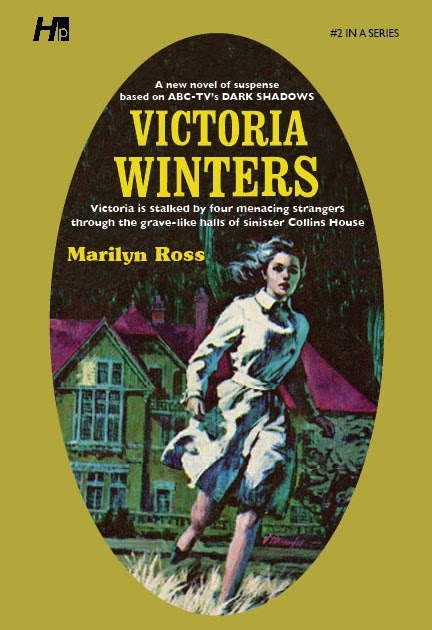
Book 2: Victoria Winters (1967)
Which Collins is trying to kill Victoria Winters now? Or are the mysterious newcomers to blame? There’s also a chilling third option—something otherworldly and vengeful from the grave.
After the dynamite opening, Book #2 is a decent follow-up mystery that earns its stars thanks only to a clever conclusion. Sadly, almost every enthralling element from the first book is stripped away. The most intriguing Collins residents are out of town and the ones who stay behind have lost their character-defining traits. Victoria’s governess role is forgotten entirely. The new love interest lacks personality. Most egregious, Ross seems to have decided that there’s no need to re-describe the groovy atmosphere of the Blue Whale or the eerie setting of Collinwood after the first book. A terrible mistake. Atmosphere is the lifeblood of a Gothic romance. Actually, atmosphere is the romance. Without it there’s no pulse.
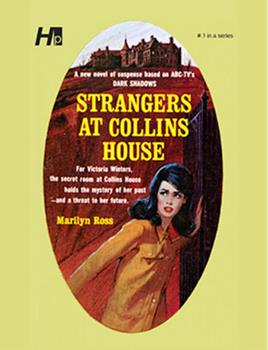
Book 3: Strangers at Collins House (1967)
Another pre-vampire entry primarily focused on the mystery of Victoria Winters’ origins. Like book #2, both love interest and groovy teenaged friend are out of town. Consequently there’s no dancing at the Blue Whale and no joviality. The book acknowledges their absence, saying the Collins residence is gloomy and dull. Indeed it is, with Victoria having no one for company but impersonal strangers and an 80-year-old man.
With less excitement around the mansion, however, there is greater attention to Victoria’s character and the mystery surrounding her parentage. Though she is nearly murdered with some frequency and participates in a spooky séance, these moments of action fail to jolt a primarily internal melodrama. There’s no real twist at the end either, which was the saving grace in Book 2. Unfortunately this book serves merely as a stepping stone to future adventures at Collinwood.
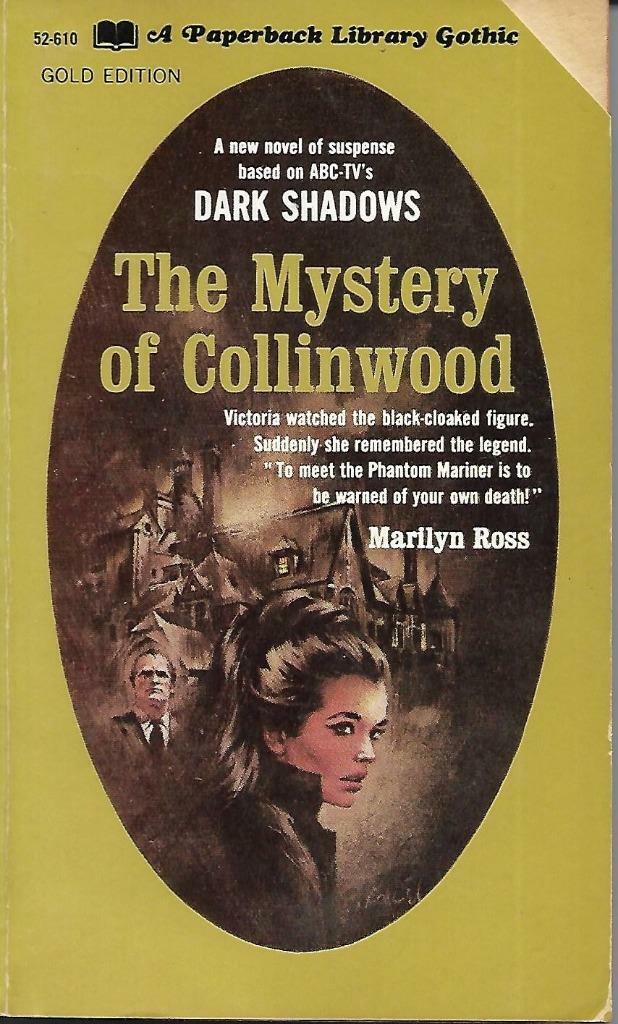
Book 4: The Mystery of Collinwood (1968)
Our dear Victoria Winters is subject to another barrage of murder attempts. It’s a Scooby Doo / Ann Radcliffe formula caper like the others, but also the most satisfying since the dynamite first book.
Some of the best characters make brief reappearances. Carolyn, the groovy teenager, arrives from school to help with an impromptu dance. And Ernest, Victoria’s semi-fiancé, visits after his own lengthy hiatus. Unfortunately, there’s another woman visiting the Collinwood estate who’s playing for his affections. Will Ernest stick to his marriage plans with Victoria? Or will he be swept away by his former confidant? And is someone trying to off Victoria to cut her out of the picture completely?
We still don’t know Victoria’s origins. There’s a nagging possibility she’s related to the Collins family, which would make her pending marriage to Ernest problematic. But the competing woman, Linda, also falls somewhere on the Collins family tree so there’s incestuous possibilities all around.
While I’m still obsessed with the spooky mansion and odd family therein, it’s disappointing that atmosphere and characterization have been absent since the set-up in the first book. Looking forward to the vampire’s introduction in Book 6 so the formula can get a big jolt.
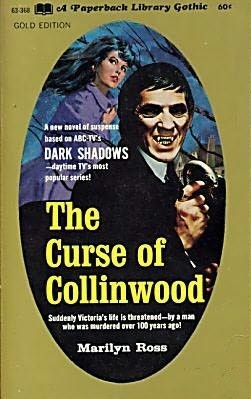
Book 5: The Curse of Collinwood (1968)
Zombies!! Dark Shadows gets a much-needed dose of supernatural macabre. Gone are the dull low-stakes melodrama of figures in the windows and Victoria obsessing over her uncertain past. Now there are legit monsters lurking in the shadowy halls of Collinwood Mansion and no one in town is safe.
It’s a spooky adventure from beginning to end. The drastic shift in focus creates some clunky context set-up, but once the story moves beyond that there’s a classic monster plot to unveil. My hope is that with the introduction of Barnabas in the next book, the rest of the series will stay focused on thrills rather than ceaseless internal pondering.
For the few readers who have been genuinely interested in Victoria’s character arc, there may be some disappointment that most loose ends remain loose. Nevertheless, this book ends nicely, with plenty of implied story for the reader imagination to fill in gaps. Perhaps future books will explain a few things as well, but if so I hope they don’t linger over it.
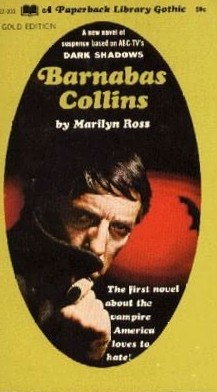
Book 6: Barnabas Collins (1968)
Barnabas at last! After Victoria Winters experiences dozens of near-death scares and becomes no closer to resolving her unknown origins, the series forgets all that and adds a vampire. This is also when the show, struggling with terrible ratings, finally became a sensation.
Indeed, the infamous Barnabas Collins is just what the plot doctor ordered. He’s handsome, he’s scary, he stalks the Blue Whale tavern for pretty young things. This sixth novel marks his first appearance and there’s no going back. His name headlines all the remaining titles of the entire saga.
The transition from Victoria to Barnabas is done well enough. Victoria remains at Collins House inexplicably, with no role to speak of other than they like having her there (but have a funny way of showing it). She’s reading through the family archive of old journals and stumbles across Barnabas’ name. Elizabeth shares what she’s heard of him, but the narration jumps to 1899 so we can experience the mystery and horror from a first hand account.
When Cousin Barnabas shows up at Collinwood for a brief stay, the young village women begin walking in a trance and have strange bite marks on their neck. The vampire has his sights set on a very young girl, however, and vows to stay until she’s eighteen so they can be married. Things don’t quite go as planned and the resulting body count is certainly the highest in any Dark Shadows book thus far.
Ross delivers a macabre and atmospheric tale, full of satisfying vampiric dungeons, ominous cemeteries and creepy coffins. I don’t know that he convinced me fully that Barnabas is as attractive as the girls make him out to be, but I actually prefer that. I like my vampires more rough around the edges than pure hunk. The ending serves excellently to set up future frights.
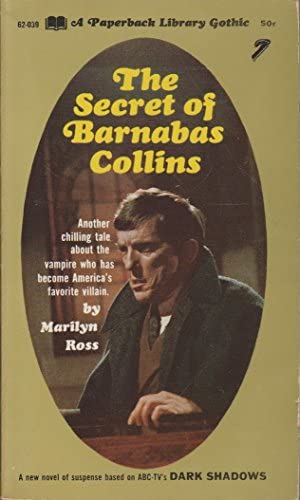
Book 7: The Secret of Barnabas Collins (1969)
I can’t get enough of Barnabas’ insatiable thirst for attractive young throats and all the women eager to be drunk. This seventh entry in the thirty-two book saga is largely historical and features a non-Victoria Winters protagonist who’s much more interesting than our usual damsel in distress.
For starters, Clare Duncan is not in distress. When her engagement to Barnabas is stalled by the discovery that he’s been kissing her maid, she decides to not let this trifle interrupt plans for the wedding, whether the groom’s still interested or not. She then meets yet another of Barnabas’ lady friends. This one reveals to Clare that her lover is undead. Instead of being horrified, Clare crusades to fix his vampire ways and proceed with her happily ever after.
Barnabas shows little initiative to being cured, however. He flees her pursuit, and the two embark on a transatlantic cat-and-mouse love chase, with Clare always at his heels and more determined than ever to tie the knot.
The camp factor is turned way up, the body count is unexpectedly high, and I love every minute of it. This is self-aware Gothic at its best. Almost a parody of itself, but just thrilling and sexy enough that you want it to be real. The phrase “gaunt, handsome face” to describe Barnabas appears so frequently that it can’t possibly be an editorial mistake but rather used to enhance the absurdity of it all.
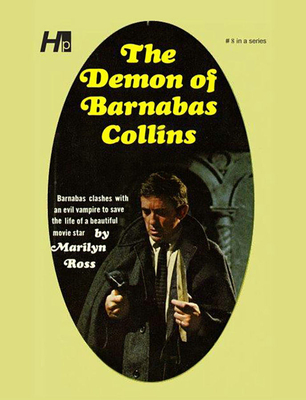
Book 8: The Demon of Barnabas Collins (1969)
Another day, another beautiful woman falls in love with Barnabas Collins. This time it’s the star actress of a film being shot at Collinwood. The regular cast of characters, including Victoria Winters, vacation elsewhere so the crew can have full access to the estate. Only Barnabas is left behind at the guest house, hoping to be left to his own devices.
So much for that.
Our heroin actress nearly married Barnabas years ago and is excited by the chance opportunity to try again. His vampire baggage does little to dissuade her from trying to make it work. For a time, it even seems possible. With the discovery of a voodoo serum, Barnabas may live as a human again. It’s almost like he’s never thirsted for blood!
All is great until the sinister voodoo doctor raises the price on his vampire remedy. And the price is very high indeed.
This eighth installment is not the best, but far from a disappointment either. A slow first half tests our patience, but once the double-crossing doctor is introduced and another surprise villain shakes things up, the story falls into place. Enough action compliments the familiar love story that it feels like a fresh adventure. For a period it almost seems like a consequential turn of events that might alter the storyline forever. Almost.
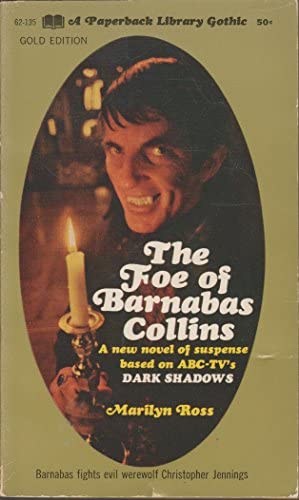
Book 9: The Foe of Barnabas Collins (1969)
If adding a vampire saved its ratings, what will werewolves, witches, ghostly orbs and satanic ritual do?! This ninth book turns the redonkulous factor way up, and I’m all for it. Motivations are senseless, romances are absurd, and the supernatural creatures are a barrage of self-aware melodrama.
It has all the satisfaction of a basic gothic romance, but is indeed far more interesting when the cast consists of throat-gobbling werewolves and blood-sucking vamps. Whoever said you can have too much of a good thing? It’s clear the writers are having fun and gleefully sticking a stake through the heart of reality. It was the right move. Never have I been more excited to continue on with the series, all the way through book thirty-two.
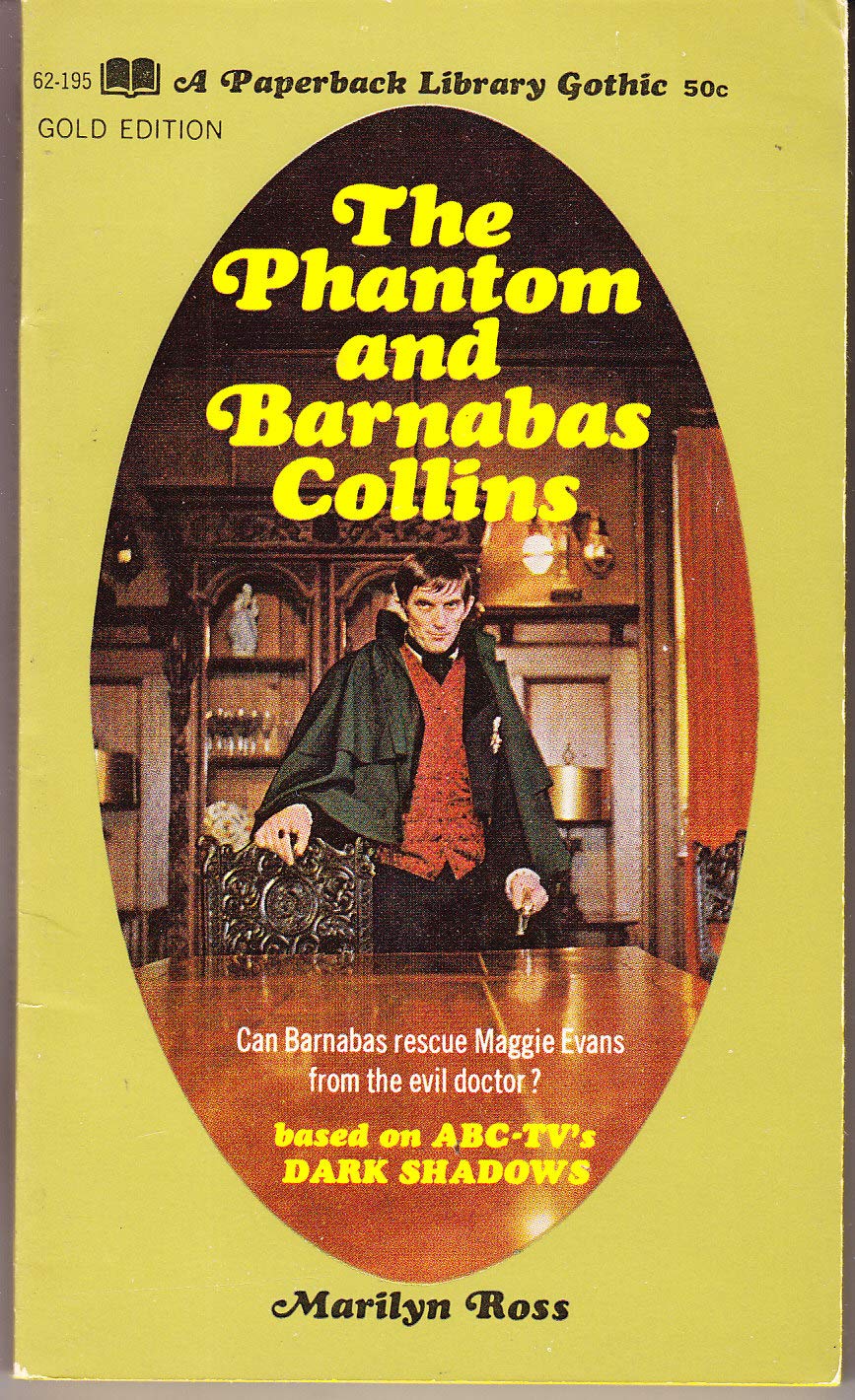
Book 10: The Phantom and Barnabas Collins (1969)
Book 10 follows another “historical” adventure of Barnabas Collins, set primarily in the 1800s. However, the context is that Maggie Collins has been mysteriously and unwittingly transported to this era from the 1960s by the otherworldly hand of Barnabas. It seems to be for the purpose of resolving a dilemma from years earlier. How this impacts the space-time continuum is not considered, nor are the logistics. But it’s Dark Shadows, so you just go with it.
Despite the bizarre premise, this adventure is actually one of the more straightforward novels in the series. There are the usual strange marks on women’s necks, and several dead bodies drained of blood. The townsfolk logically suspect a vampire, and Maggie, perhaps blinded by her love for Barnabas, is determined to clear his name. But will her efforts only make her a target?
There’s also the mysterious Pink Phantom to explain. An old crone of a woman wanders the darkened corridors shrouded in pure pink. Why is Maggie the only one who can see her? She must be a ghost, but of whom, and what does she want?!
The solution to the various mysteries is more complex than usual, and some answers are almost unexpected. Not the best entry in the series, but far from the worst. On to book 11!
Don’t miss the latest reviews! Follow us on social media:
